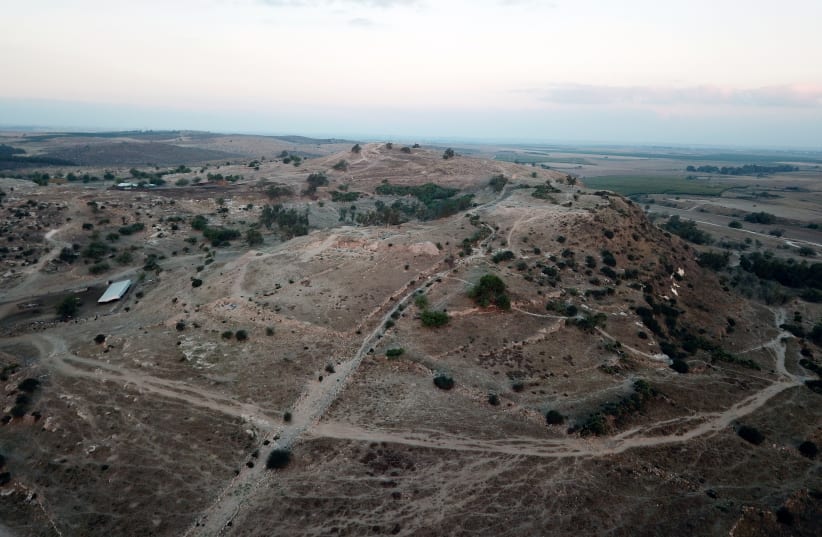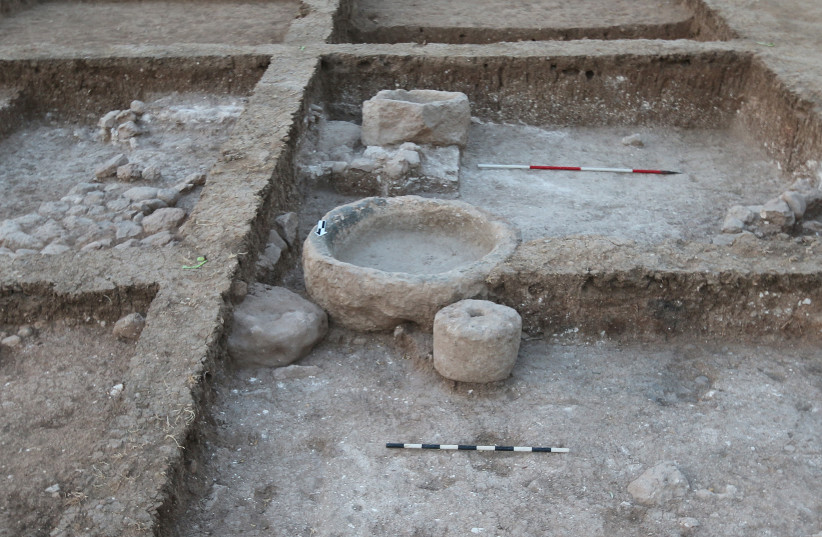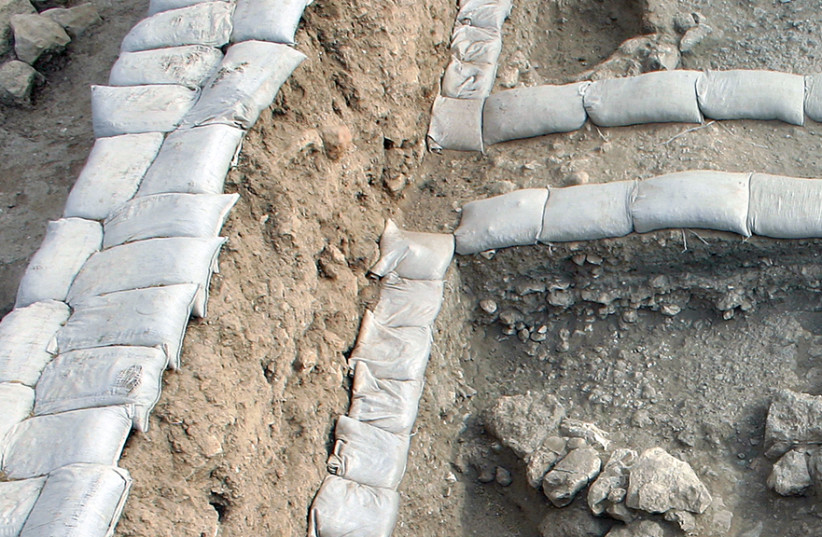Contrary to what was previously believed by archaeologists, the Philistines were not the only ones producing olive oil in the Judean foothills – also known as Shfela – as the Kingdom of Judah also engaged in the production of olive oil even after the destruction brought by the Assyrian conquest, a new study by Bar-Ilan University and University of Kentucky researchers has suggested.
In addition, the Philistines started their production of olive oil earlier than what had been claimed in the past.
“Up until quite recently it was thought that only from the 8th century BCE onwards, when the Philistines came under Assyrian control, the site of Tel Miqne-Ekron became one of the largest centers in the world for oil production, and it was thought that it happened only because of the Assyrian influence,” said Bar-Ilan Prof. Aren Maeir, lead author of the article which appeared in the Palestine Exploration Quarterly.
Some 150 olive presses were found at Ekron, and they were believed to be part of the development of the economy of the empire.
The Assyrian campaign in the region, which also dealt a severe blow to the Judean Kingdom, is described in the Bible.
“After these faithful deeds, King Sennacherib of Assyria invaded Judah and encamped against its fortified towns with the aim of taking them over,” reads a verse in the chapter 32 of II Chronicles.
The idea that olive oil production in the area only began after this military campaign never seemed logical to Maeir, he said.
“Olives can be grown in the Shfela, and there is evidence it was already done in prehistoric times,” he said.
His view was backed by remains uncovered over the past 25 years.
“In Gath, we found evidence that olive oil production was already carried out from at least the Iron Age, or 11th or 10th century BCE,” he noted.
Located in central Israel, about 35km. northwest of Hebron between the Judean Foothills and the southern Coastal Plain, Gath – also known as Tell es-Safi – is also prominently featured in the Bible in events taking place several centuries later, including as the city of origin of David’s giant Philistine foe, Goliath.
The Iron Age covers the years between 1200 and 586 BCE and is divided in subperiods.
The olive oil production was even more intense in the 9th century up until the city was destroyed by the Aramean King Hazael.
“We found olive presses in three or four areas in Gath,” Maeir remarked. “This tells that olive oil was a major economic product of Gath way before the Assyrians were involved in the area.”
The study also addresses and contends with another notion previously common among archaeologists.
“For many years it was thought that after Sennacherib’s victory for many years the Judeans were kicked out of the Shfela,” Maeir said. “Recent excavations at Bet Shemesh have shown that although this was true for many parts of the Shfela, they still held on to the eastern part of it and they continued to produce olive oil there.”
In Tel Beit Shemesh, archaeologists also uncovered tools for the production, such as presses and vats.
“It is clear that as archaeological research in Philistia and the Shfela presses on, it illuminates, like an oil lamp, previously dark and unclear aspects of Iron Age culture, society and economy,” the paper’s conclusion reads.


